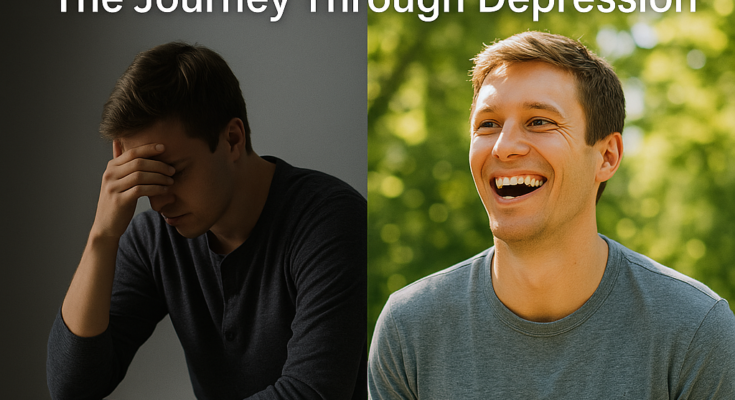Understanding Depression: A Comprehensive Guide to Symptoms, Causes, and Hope
Depression is more than fleeting sadness—it’s a relentless storm cloud that dims joy, drains energy, and disrupts every facet of life. Affecting over 280 million people globally, this complex mental health condition weaves together biological, emotional, and environmental threads. Let’s unravel its layers, explore paths to healing, and shine a light on reclaiming life from its grip.
What Is Depression?
Depression is a persistent mental health disorder marked by profound sadness, loss of interest in daily activities, and a cascade of physical and emotional symptoms. Unlike temporary grief, depression lingers for weeks or months, impairing work, relationships, and self-worth. Imagine waking up each day under a weighted blanket of apathy—even simple tasks feel insurmountable.
Roots of the Storm: Causes and Risk Factors
Depression doesn’t stem from a single source. It’s a tangled web of influences:
- Genetics: A family history of depression can increase vulnerability, like inheriting a fragile emotional blueprint.
- Brain Chemistry: Imbalances in neurotransmitters like serotonin and dopamine disrupt mood regulation. Think of these chemicals as broken dials in the brain’s control panel.
- Life Stressors: Trauma, financial strain, or loss can act as triggers, igniting a downward spiral.
- Chronic Illness: Conditions like cancer or heart disease often cast long emotional shadows.
- Hormonal Shifts: Postpartum hormonal changes, for example, can plunge new mothers into depressive episodes.
Recognizing the Signs: Symptoms to Watch For
Depression’s symptoms vary but often cluster into two categories:
Emotional Red Flags
- Unshakable sadness or emptiness
- Loss of passion for hobbies, socializing, or intimacy
- Overwhelming guilt or self-criticism
- Recurring thoughts of death or suicide
Physical and Behavioral Clues
- Sleep disturbances: Insomnia or excessive sleeping
- Appetite swings: Weight loss or gain without effort
- Fatigue: Draining energy, even after rest
- Mental fog: Trouble concentrating or making decisions
Diagnosing Depression: The Path to Clarity
Diagnosis begins with a thorough evaluation by a mental health professional. They’ll assess:
- Duration and intensity of symptoms (must persist ≥2 weeks)
- Medical tests to rule out thyroid issues, vitamin deficiencies, or other mimics
- Standardized tools like the Hamilton Depression Rating Scale
Light in the Darkness: Treatment Options
1. Therapy: Rewiring Thought Patterns
- Cognitive Behavioral Therapy (CBT): Challenges negative thought loops (“I’m a failure”) and replaces them with balanced perspectives.
- Psychodynamic Therapy: Explores unresolved past conflicts—like unpacking emotional baggage to lighten the present.
2. Medication: Balancing Brain Chemistry
- SSRIs/SNRIs: Prozac, Zoloft, and similar drugs boost serotonin levels, lifting mood over weeks.
- Atypical Antidepressants: Options like Wellbutrin target dopamine for added motivation.
3. Lifestyle Adjustments: Small Steps, Big Impact
- Exercise: A 30-minute walk releases endorphins, nature’s mood boosters.
- Nutrition: Omega-3-rich foods (salmon, walnuts) and vitamin D combat inflammation linked to depression.
- Sleep Hygiene: A consistent bedtime routine resets circadian rhythms.
- Mindfulness: Yoga and meditation quiet the mind’s chaos, grounding you in the present.
4. Community and Connection
- Support Groups: Sharing struggles with others who “get it” reduces isolation.
- Family Involvement: Loved ones can learn to offer empathy, not judgment.
Prevention and Managing Relapses
While not always preventable, resilience-building strategies help:
- Stress Management: Journaling, art, or hobbies act as emotional pressure valves.
- Routine Check-ins: Regular therapy sessions catch early warning signs.
- Self-Compassion: Treat setbacks as detours, not dead ends—adjust your plan and keep moving.
Breaking the Stigma: A Call to Action
Depression thrives in silence. By fostering open conversations and prioritizing mental health care, societies can dismantle shame and offer hope. Remember: Seeking help isn’t weakness—it’s courage in action.


